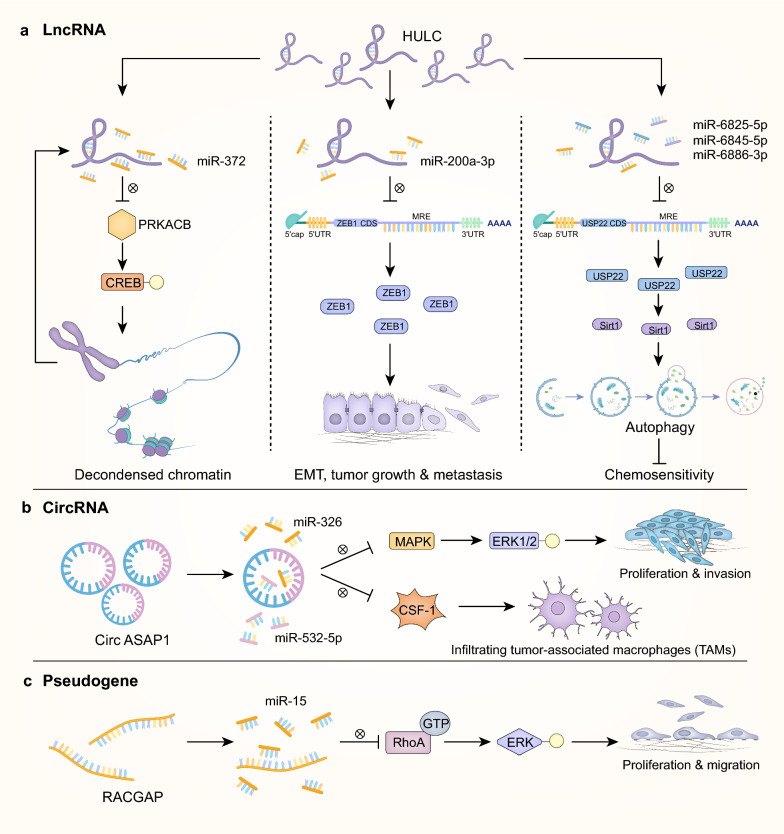Fig. 5.
Simplified examples of the roles that different classes of ceRNAs play in HCC oncogenesis. a LncRNA: HULC functions in HCC by three mechanisms: (1) Transcription activation of HULC decreases miR-372 level in HCC, derepresses PRKACB function and CREB phosphorylation, hence enhancing chromatin accessibility and transcription. (2) HULC exerts a negative regulatory effect on miR-200a-3p and subsequent upregulation of ZEB1, which facilitates EMT, tumor growth and metastasis. (3) HULC sponges miR-6825-5p, miR-6845-5p and miR-6886-3p, leading to increased expression of USP22 and Sirt1, which activates the protective autophagy pathway and attenuates HCC cell sensitivity to chemotherapeutic agents. b CircRNA: CircASAP1 decreases miR-326 and miR-532-5p level, thus promoting proliferation and invasion of HCC through miR-326/MAPK/ERK1/2 signaling, and raising TAMs infiltration through CSF-1 activation and secretion. c Pseudogene: RACGAP binds to miR-15, enhances the binding of GTP to RhoA and further ERK phosphorylation, promoting tumor cell proliferation and migration

